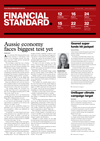Calls for government to strike while green iron is hotBY JAMIE WILLIAMSON | MONDAY, 26 MAY 2025 1:13PMAustralia could eventually export $400 billion in green iron, but new research demonstrates there are significant market and policy failings standing in the way. According to The Superpower Institute, green iron produced in Australia could compete with fossil fuel-based production if government policies were improved. Currently, Australia exports about $85 billion in iron ore per year. It said there are three key failings preventing the green iron industry from reaching its full potential. These are: lack of an international price on carbon emissions; inadequate incentives for innovation and early investment; and underinvestment in critical infrastructure. "The failures we outline aren't simply theoretical - they are actively preventing investment decisions right now. Projects worth billions of dollars and thousands of jobs are stalled because these market failures make the economics unworkable without policy intervention," The Superpower Institute chair Rod Sims said. "The onus is now on the government: there is a substantial prize in play if the right policies, grounded in the National Interest Framework, are adopted. "Green iron is the next great chapter in Australia's export story. As the world decarbonises, our fossil fuel exports will inevitably decline. But by using our unparalleled renewable energy resources to make green iron, we can replace those exports with high value, zero carbon products that the world will need." According to the research, Australia's green iron producers are disadvantaged because the lack of an international carbon price "distorts the international market for iron products, and creates and inefficient advantage for fossil-fuel based products." Drawing on modelling across key production regions - the Pilbara, Geraldton, Kwinana, Eyre Peninsula, and Gladstone - the institute found that if iron producers paid the expected EU carbon price in 2030 then the cost of fossil fuel-based production would soar and the green premium would shrink. The current EU carbon price is $155 a tonne. The institute gave several recommendations of how to address the issues hampering green iron's potential. These include:
"The global race to secure green iron production is already underway. Countries that move first to address these market failures will capture market share, technology leadership, and decades of economic benefits. We have a once-in-a-generation opportunity, but the window for action is closing." |

QIC has completed a $370 million equity raise and $1.6 billion debt refinancing for Pacific Energy Group (PEG) for a contracted capacity of 946 megawatts (MW) across 48 sites.
Australia could eventually export $400 billion in green iron, but new research demonstrates there are significant market and policy failings standing in the way.
Raf Wood, co-managing director of Silva Capital, discusses the evolution of Australia's carbon market and Silva's latest update on their carbon credit projects.
Natixis Investment Managers will combine two of its affiliates, Mirova and Thematics Asset Management.

















